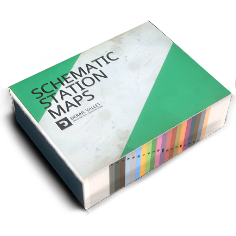Body Damage/it: Difference between revisions
Updating to match new version of source page |
No edit summary |
||
| Line 1: | Line 1: | ||
<languages /> | <languages /> | ||
I {{pll|Damage Overview|danni}} al telaio di un {{pll|Rail Vehicle Types|rotabile}} si verificano più comunemente a seguito di collisioni. Scontrarsi con un qualsiasi veicolo, un {{pll|Railway Terminology|respingente}} o un altro oggetto a {{pll|Speed Limit Signs|velocità}} elevata comporta inevitabilmente dei danni. | |||
<div lang="en" dir="ltr" class="mw-content-ltr"> | <div lang="en" dir="ltr" class="mw-content-ltr"> | ||
Revision as of 16:44, 5 September 2025
I danni al telaio di un rotabile si verificano più comunemente a seguito di collisioni. Scontrarsi con un qualsiasi veicolo, un respingente o un altro oggetto a velocità elevata comporta inevitabilmente dei danni.
Most common situations in which collision damage occurs is due to derailing, distracted shunting, badly set up switches and wheelslide. Body damage can also be caused by various powertrain failures that cause parts to fly apart, as well as fire and even explosions.
Damage to a vehicle's body may result in failure of various accessories, such as windows, lights and compressors. It doesn't otherwise affect the moving capability of a vehicle, however.
To ensure safe contact between vehicles, it is recommended to not come in contact at more than 5 km/h. To help anticipate contact better, there are proximity sensor gadgets.
Body damage of a vehicle is displayed on its ID plate.
Damaged vehicle bodies can be serviced.
Cars and cargo can be damaged from collisions too.
Body damage can be inflicted manually in sandbox mode, using the comms radio damage mode.
